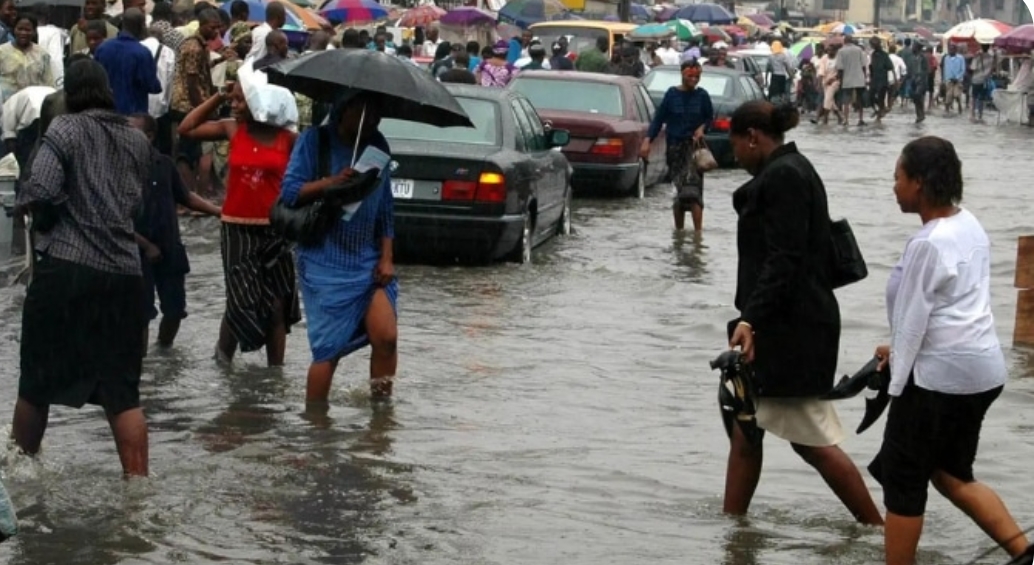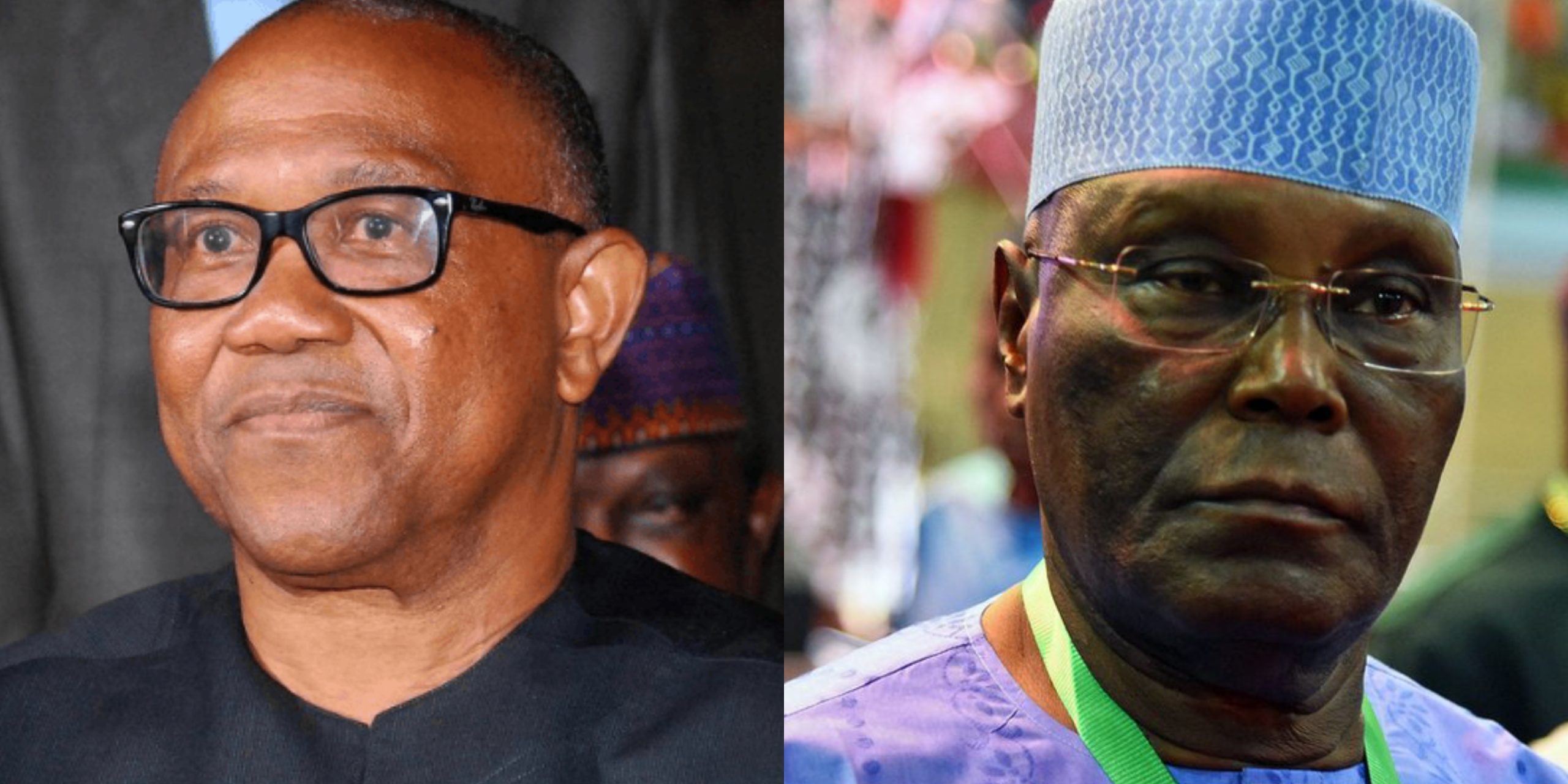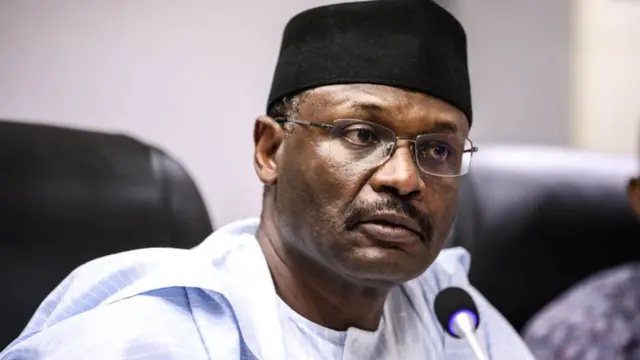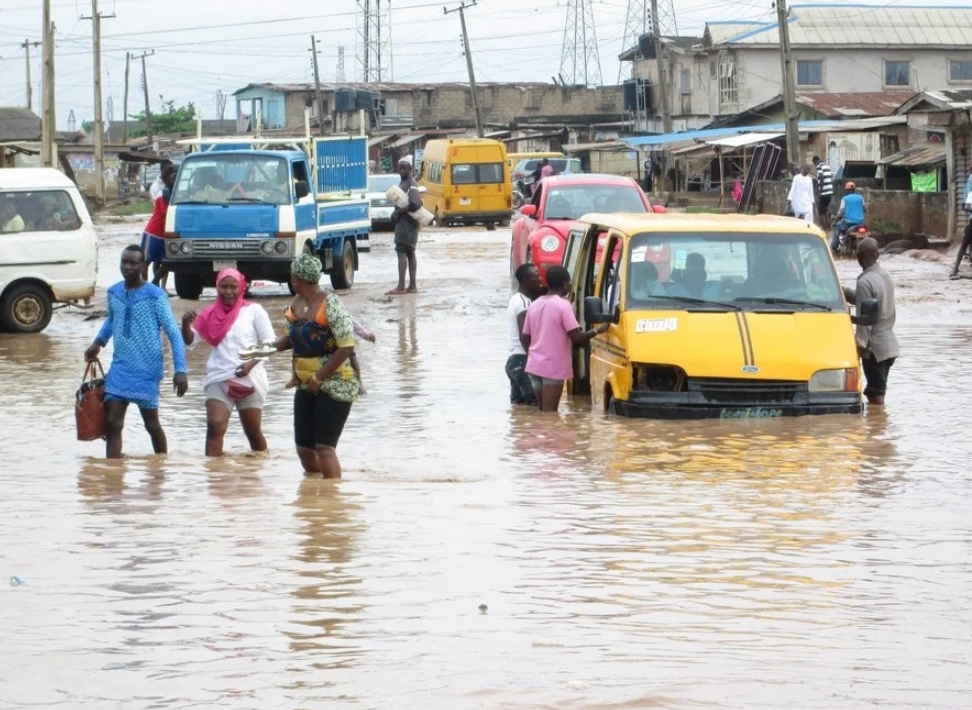The Nigeria Hydrological Services Agency (NIHSA) has issued a warning about the flood risks in Nigeria for 2025.
The NIHSA highlighted that 1,249 communities in 176 Local Government Areas (LGAs) are at high risk of flooding.
This information was shared during the presentation of the 2025 Annual Flood Outlook (AFO) in Abuja by Prof. Joseph Utsev, the Minister of Water Resources and Sanitation.
The forecast also pointed to 2,187 communities in 293 LGAs across 31 states and the Federal Capital Territory (FCT) experiencing moderate flooding this year.
States at high risk of flooding include Abia, Adamawa, Akwa Ibom, Anambra, Bauchi, Bayelsa, Benue, Borno, Cross River, Delta, Ebonyi, Edo, FCT, Gombe, Imo, Jigawa, Kebbi, Kogi, Kwara, Lagos, Nasarawa, Niger, Ogun, Ondo, Osun, Oyo, Rivers, Sokoto, Taraba, Yobe, and Zamfara.
The flood risk is expected to vary throughout the year.
Between April and June, 657 communities in 52 LGAs will face high flood risks.
This number will rise to 544 communities in 142 LGAs from July to September, and 484 communities in 56 LGAs will face high flood risks between October and November.
Moderate flood risks will affect 445 communities in 116 LGAs between April and June, 1,458 communities in 271 LGAs from July to September, and 1,473 communities in 171 LGAs from October to November.
Major cities such as Abuja, Lagos, Port Harcourt, Ibadan, Kano, and Makurdi are expected to experience flash and urban flooding, largely due to inadequate drainage and weak infrastructure.
Coastal states, including Bayelsa, Cross River, Delta, Lagos, Ogun, Rivers, and Ondo, may also face flooding from rising sea levels and tidal surges, which could disrupt livelihoods and river-based activities.
In response to these risks, the government has announced several initiatives, including the National Flood Insurance Programme to be piloted in Kogi and Jigawa states and the Niger Flood Project, which aims to improve flood control and climate resilience.
The government also plans to launch an Integrated Climate Resilience Project and the Annual Drought Outlook.
The Minister urged citizens to be prepared and proactive to reduce the impact of floods.
NIHSA Director-General Umar Mohammed highlighted the use of advanced technologies and inter-agency collaboration to ensure timely and accurate flood predictions, aiming to protect lives, property, and livelihoods.
The agency is focused on strengthening community resilience and supporting flood management strategies across the country.




















